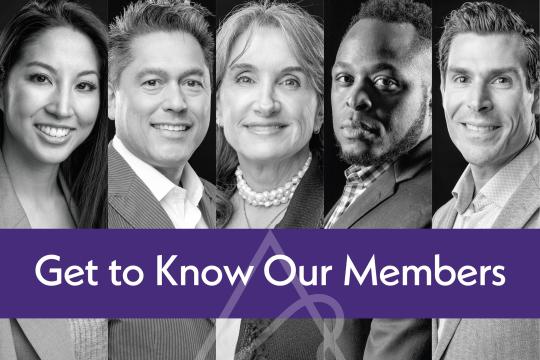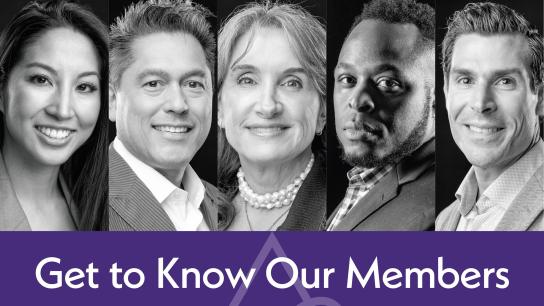
Dr. Albert is an Aesthetic Society member, practicing out of the Optimization Centre in Boca Raton, Florida. For twenty years he has also been the plastic surgeon for the Florida Panthers, an NHL team that made it to The Stanley Cups Finals this year.
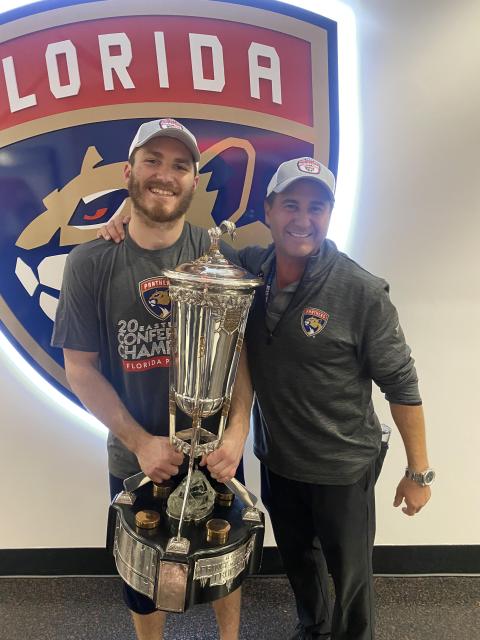
Please tell me about your role as the plastic surgeon for The Panthers. What does it entail and how did you come to be in this position?
The CEO of the panthers reached out to my wife, who is also my office manager. The Orthopedic Surgeon who was putting the medical team together, recommended me for the position. At the time, I did not know much about hockey, what the role would entail, nor how often they would get injured. But I was up for the challenge, and it did not disappoint. Working on professional athletes was always part of my career plans. Being a part of the action in time-pressured situations to get players back in the game and ready to perform at an optimal level turned out to be very rewarding. The camaraderie with the other team doctors, management, coaches, and players has been a fantastic experience and a bonus I was not expecting. Another bonus is that my daughters have basically grown up in the arena with the players, staff, and their families.
What is the biggest difference between working with athletes vs. your regular patients?
Athletes are “patched together” more for form and function with an emphasis on function. Patients are generally more concerned with the cosmetic result. With athletes, I am concerned about the next injury while fixing the injury at hand. So, preservation of tissue while leaving options for possible future injuries is always a concern. With facial fractures, depending on the location, player, and their history of injuries, I may use titanium plates and screws over absorbable mesh.
Are there different timelines post-op for healing requirements for athletes?
Both healing and getting a player back on the ice is of utmost importance. It is essential that players work with the medical team, athletic trainers, and physical therapist for a successful recovery. Everyone works together to get them back on the ice during practice and ultimately game day. I like to under promise and overdeliver meaning that I overestimate time off until they are back on the ice. If they are back on ice sooner, then I look like a hero
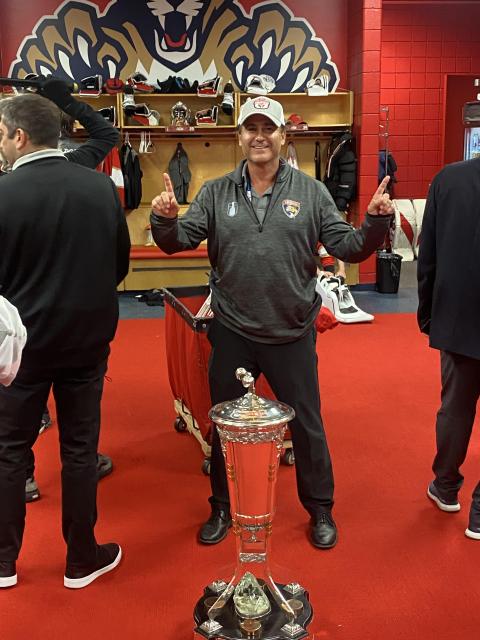
What are some of the unique questions/concerns that your athletes ask you and how have their mindset changed your perspective in the way you operate?
A surprising fact is that about 90% of athletes care how they look which is probably very different from players twenty plus years ago. Most players do not have, nor desire, thick scars anymore. The idea of mitigating scars pushed me to develop a scar cream that players have used for last fifteen years, something I now provide to my regular patients.
What are some of the common injuries or issues that you encounter as the team's plastic surgeon?
Lacerations on eyebrows and chins is the number one injury. This is followed closely by broken noses and orbital fractures which are usually handled after the game. I will also treat NHL and NFL players with Botox for hyperhidrosis.
How do you approach treating these injuries?
Most injuries are taken care of in the treatment room. It is a high-adrenaline environment, with lots of excitement. I work with the medical team in a treatment room adjacent to the locker room (just off the ice). The roar of the crowd keeps us engaged with getting players back in the game.
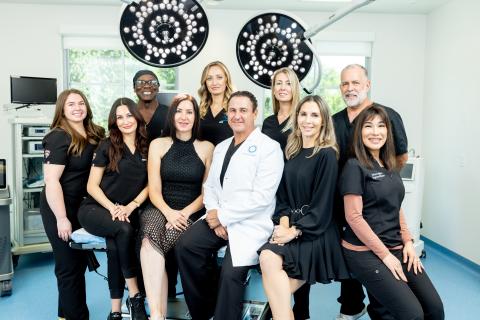
Could you share any memorable experiences or success stories where your expertise as a plastic surgeon made a significant difference for a player's recovery or career?
A long-term Panther player, and frequent flyer to the treatment room, came off the ice after he had been hit with a puck in the middle of the eyes going at least 100mph. He said, “doc not a problem.” I said, “I don’t think so.” I wound up fixing his naso-orbital-ethmoid fracture with a titanium plate making up most of his newly reconstructed nose. He made me look good and went back to playing the next week. More importantly, his wife said he never looked better!
One of the referees got in the way of a slap shot in front of the panther bench and sustained multiple facial fractures. He was definitely one of the worst sports injuries I have treated. I fixed him up and he was very grateful since he was in line to get nominated for the Stanley Cup Final. I put him back together and with his hard work, he made it back in time to officiate at the Stanley Cup Finals. As a thank you, I got a very special gift that is very limited in number…a signed jersey from an NHL referee.
I got a call from the trainer of the Miami Dolphins that a lineman had sustained an orbital blowout fracture. The next day he had a CT to confirm the diagnosis. On Tuesday, I fixed the orbital blowout fracture with plates and screws. Next few days he trained, and I cleared him to play the next Sunday (1week later). He played well and the coach and president of the Dolphins called to thank me for doing such a good job.
Another player came off the ice in the first period and to most of the medical staff, had looked like he had broken his jaw. I stitched him up and told him we need to take an x-ray to make sure he did not break his jaw. He refused and said he felt fine. At the end of the game, an x-ray showed a severely comminuted mandible fracture. He essentially played the whole game with a fractured jaw… and no pain meds.
Players are generally very tough. However, one injured player from an opposing team came into the treatment room with his trainer. He wanted to get back on the ice quickly and requested no anesthesia. His requirement was that the trainer had to hold his hand. During the minor procedure, the trainer was sweating and in much more pain than the player because the player was squeezing his hand with a tobacco tin cutting into his palm
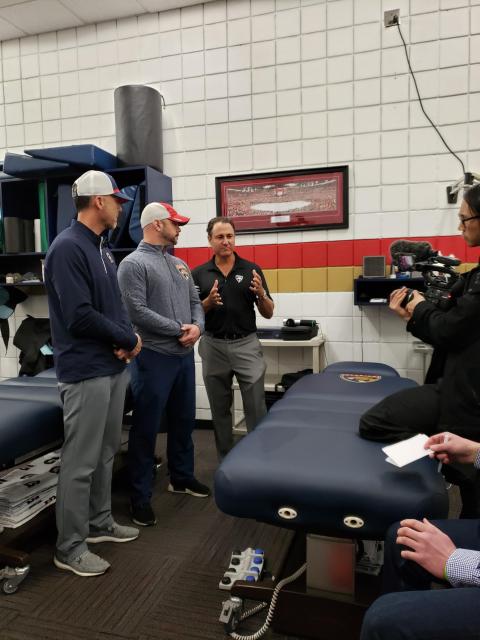
In what ways does your role as the plastic surgeon for an NHL team differ from your work in a traditional medical setting? What unique challenges or opportunities does it present?
When I first started working with the team, I had to speak with the player’s agent and explain why a fix needed to be done. Thankfully, trust in my abilities has grown and those type of conversations have not occurred in the past ten years.
The biggest challenge is predicting when the player can go back to the game.
As a plastic surgeon, how do you collaborate with other members of the medical team to ensure the best possible care for the players?
Sometimes we discuss ways to mitigate players’ downtime. Plastics patients get back quicker than orthopedic patients so it’s a matter of timing as to which discipline works on a player first.
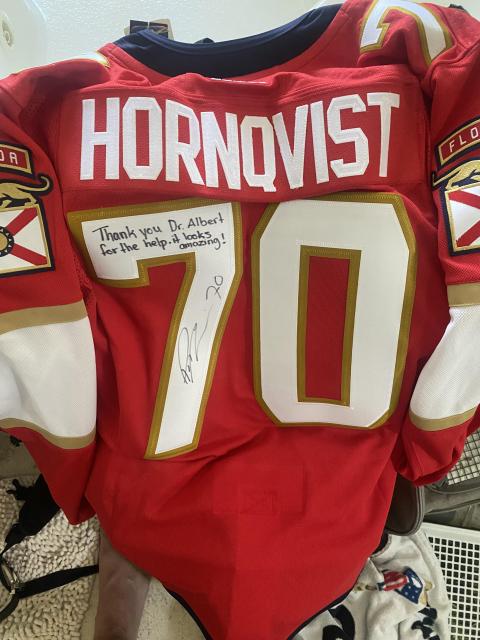
How do you support the players' emotional well-being during the recovery process? Are there any specific strategies or approaches you use to help them cope with the physical and psychological aspects of their injuries?
Players require lots of emotional reassurance. Each player has an entourage that includes their manager, agent, wife/girlfriend, etc. that give input as to how surgery must to be absolutely perfect so they can get back to work as soon as possible. The player simply wants easy and uncomplicated recovery.
What measures do you take to stay updated with the latest advancements and techniques in plastic surgery relevant to sports-related injuries?
- NHL yearly meeting
- Regular NHL updates
- Orthopedic sports medicine updates regarding new criteria
Can you discuss the impact of plastic surgery on the players' confidence and self-esteem? How does it contribute to their overall performance on the ice?
Young athletes want to look good in life after the game…. And want to look their best while still a player. Plastic surgery makes them feel more confident. Although athletes are in top shape, a majority appear to age quicker, and look older prematurely. Athletes are even more sensitive to looking young, and often do what they can to look younger for longer to keep up their confidence.
What advice would you give to aspiring plastic surgeons who are interested in working with professional sports teams? What qualities or skills are essential to succeed in this specialized field?
- Be patient!
- Offer up services to teams that don’t have surgeons.
- Know your value – Plastic Surgeons have specific skill sets important to every athlete. Nose and breathing.
- Don’t ask anything in return. Consider it an honor to treat the players, which is essential across all sports. The incentive is not monetary, it is the reward of getting them back to playing ASAP.
- Volunteer with a team.
- Understand that some teams have you pay to treat the players.
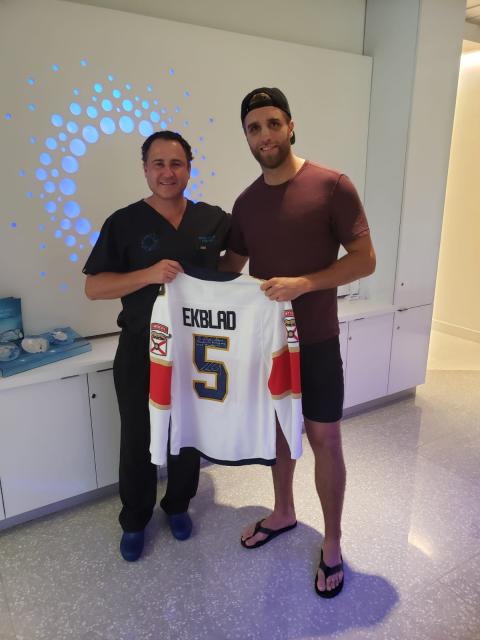
And what advice would you give to your younger self? And to those starting out in plastic surgery.
- Remain humble! Give the patients time and treat them like a person
- Be available… but with caution.
- Be patient. And allow some things to come to you.
- Be seen and not heard… in the locker room.
- Sit back and observe before jumping in and doing something too aggressive.
- Do what you’re passionate about. Not for the money. You must love people.
- Listen. And know what the patient wants.
What is the first app you check in the morning? Last app checked at night?
I don’t rely on apps the way most people do. In that sense, I’m a bit boring. However, every morning I check The Weather app and CNBC. My oldest daughter is a golfer, so the last app I check every night is The Weather.
Do you listen to music while in surgery? If so, what is your favorite?
- Rock and alternative
- Nickelback and Goo Goo Dolls
- Eminem
In another life I would have been ….
I’m not sure what I would do if not a surgeon affecting people’s lives in a positive way.
The best bit of advice I ever received was …
- My mom who died from cancer at 56 told me to enjoy the journey. Before you know it, it will be over.
- While at my wedding my dad told me to be nice.

